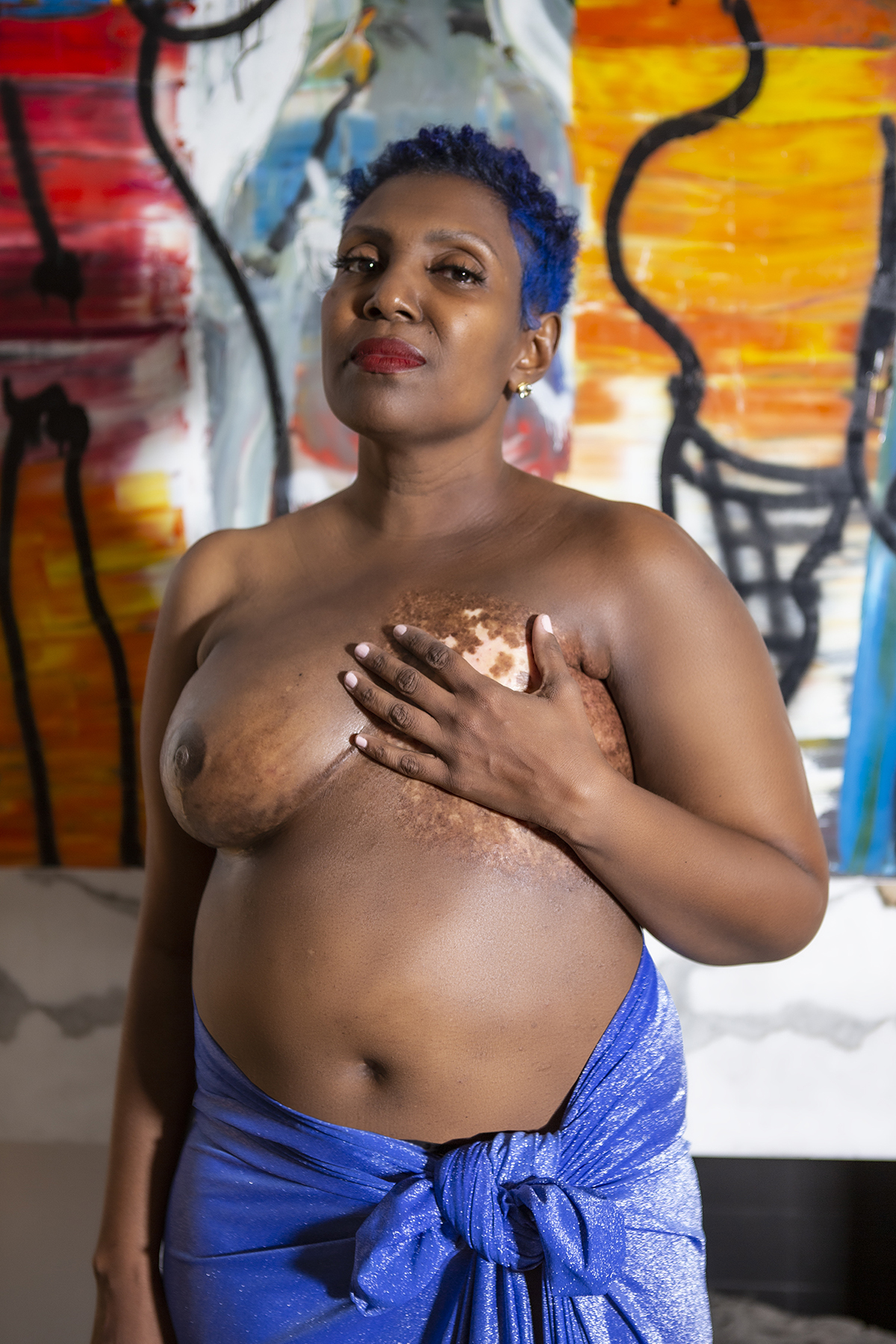
Charise Isis was visiting Los Angeles when she got a call from Spirit, a woman who wanted to be a part of The Grace Project. At that point, Isis had been working on the project for a decade, traveling from city to city creating portraits with people who’d undergone mastectomy surgery as a result of breast cancer. She’d have to catch a flight the next day, but she told Spirit she could photograph her that night in a friend’s apartment.
Spirit agreed. She showed up, shed her shirt, and sat for the camera. By the time she left that night, she was beaming.
The Covid pandemic hit almost immediately after that session, leaving Isis unable to travel to photograph and meet people in person. Soon after, with the pandemic at its height, the photographer reached out to Spirit and learned that she’d just been hospitalized for several weeks. Amid lockdowns, with Spirit in bed in Los Angeles and Isis across the country in New York, they set up a Zoom call.
“We had a conversation about the disparities that she had faced as a Black woman, talked about the painful journey she had traversed, and discussed how thrilled she was to be a part of The Grace Project,” Isis remembers now. “She said she had made that portrait to leave a thing of beauty behind for her family.”
Spirit passed away shortly after that conversation. Soon after that, the Black Lives Matter Movement made history. “The message Spirit left for the world was incredibly powerful,” Isis tells me now. “In the face of her own mortality and barely able to breathe, Spirit was still willing to advocate for her cause, and she was still willing to laugh.”
Over thirteen years, Isis has photographed more than 700 people. The women in the project are known as the Grace Goddesses. Spirit will always be one of them. In her portrait, her hand rests over her chest and heart–a living, breathing statue, bathed in light. Like the Venus de Milo, she has cloth draped around her waist–blue to match her hair. Her shoulders are open, reminiscent of another ancient Greek sculpture, the Winged Victory of Samothrace, about to take flight.
Isis isn’t done yet. Today, she has folders of applications from people across the US, each with their own story, waiting to meet her. We asked her more about her epic journey–a path that’s taken her around the country and put her in touch with hundreds of extraordinary people.
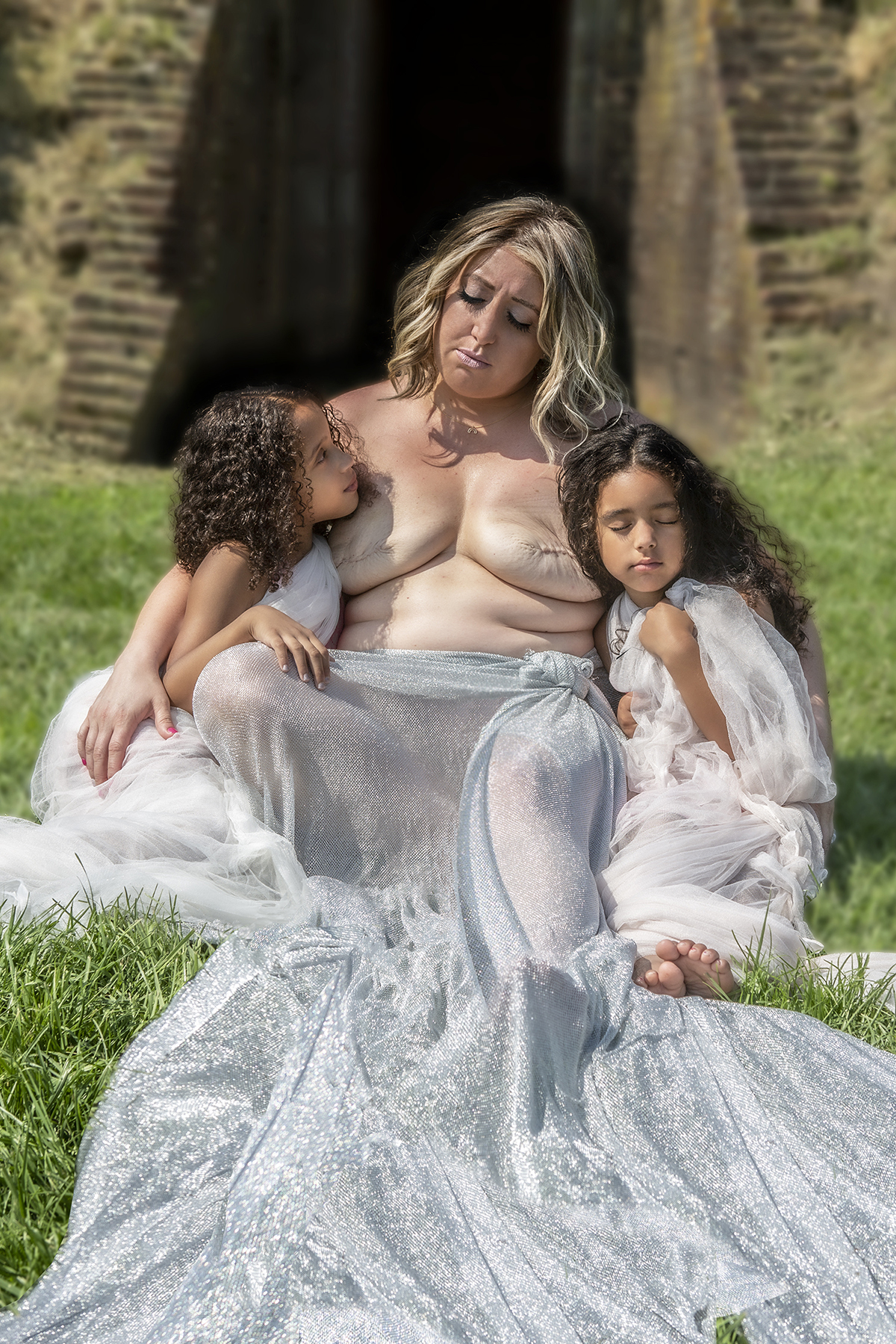
You’ve been working on The Grace Project since 2009–is that right? Which was the first picture you made, officially as part of the project?
“Yes, the project was started in 2009. But prior to The Grace Project, I specialized in Boudoir photography. A local paper heard about my work and ran an article about the work I was doing and interviewed many of my clients, all of who talked about the transformative experience that had as a result of visiting my studio for a photo shoot. Shortly after the article ran, a man called to book a shoot for his wife. He explained to me that he hadn’t told her that he wanted her to do this for him, but he was checking on prices and would call back if she agreed.
“She consented, and the day of the shoot, a lovely petite woman with cropped grey hair showed up to the studio. She had hat boxes and hangers full of clothing; however, everything she had with her was about covering her body. I found this curious.
“After about 45 minutes into the shoot, she finally confessed to me that the reason that she was staying covered was that twelve years earlier, she had a mastectomy on one side and felt mutilated under her clothing. The only people to have seen her scars were her doctors and her husband. Her husband had read the article about my work and wanted her to have the transformative experience that my clients had claimed in the article about my work.
“Once she had confessed this to me, she started exposing her non-mastectomy breast but leaving the mastectomy side covered. We got back into the flow of the photoshoot. I could see she was having fun and feeling sexy. Laying in an odalisque position on my couch, she suddenly threw off her shirt and exclaimed, ‘Fuck it, I’m doing this for myself.’ In that moment, I realized I was witnessing a woman letting go of twelve years of shame. It was my most powerful photographic moment up until that point and incredibly cathartic for her… but also for me.
“A few weeks later, a friend called and told me she couldn’t afford to pay me for a photo shoot, but that she was hoping I would agree to photograph her. She was about to ‘have her breast chopped off due to breast cancer’ and she wanted to remember what her body looked like. I spent a few hours with her, capturing her grief, sadness, anger, fear, bravery… a whole roller coaster of emotions that she was experiencing prior to her mastectomy. I had her return to my studio three weeks later with her fresh scars and new body.
“The experience of photographing these two women cause me to start exploring the internet for mastectomy portraits. All I could find were these gruesome medical images of women’s torsos. The photographs were badly lit and cropped from the neck to above the groin. I was horrified to think that these were the images that women would find if they were newly diagnosed with breast cancer. I decided that I needed to put a face to breast cancer and to create some beauty and courage, as that is what I had witnessed between the two women who had come to my studio.
“I began to put the word out to friends; I asked everyone if they knew someone who had breast cancer that might be interested in participating in my project. A close friend reached out to her oldest friend, and I shot her portrait in my friend’s gorgeous garden. It was a beautiful sunny day. I photographed her amidst flowers, draped with a beautiful tapestry. It was an empowering experience for her and the beginning of what was about to become a massive journey for me. I had no idea at the time.”
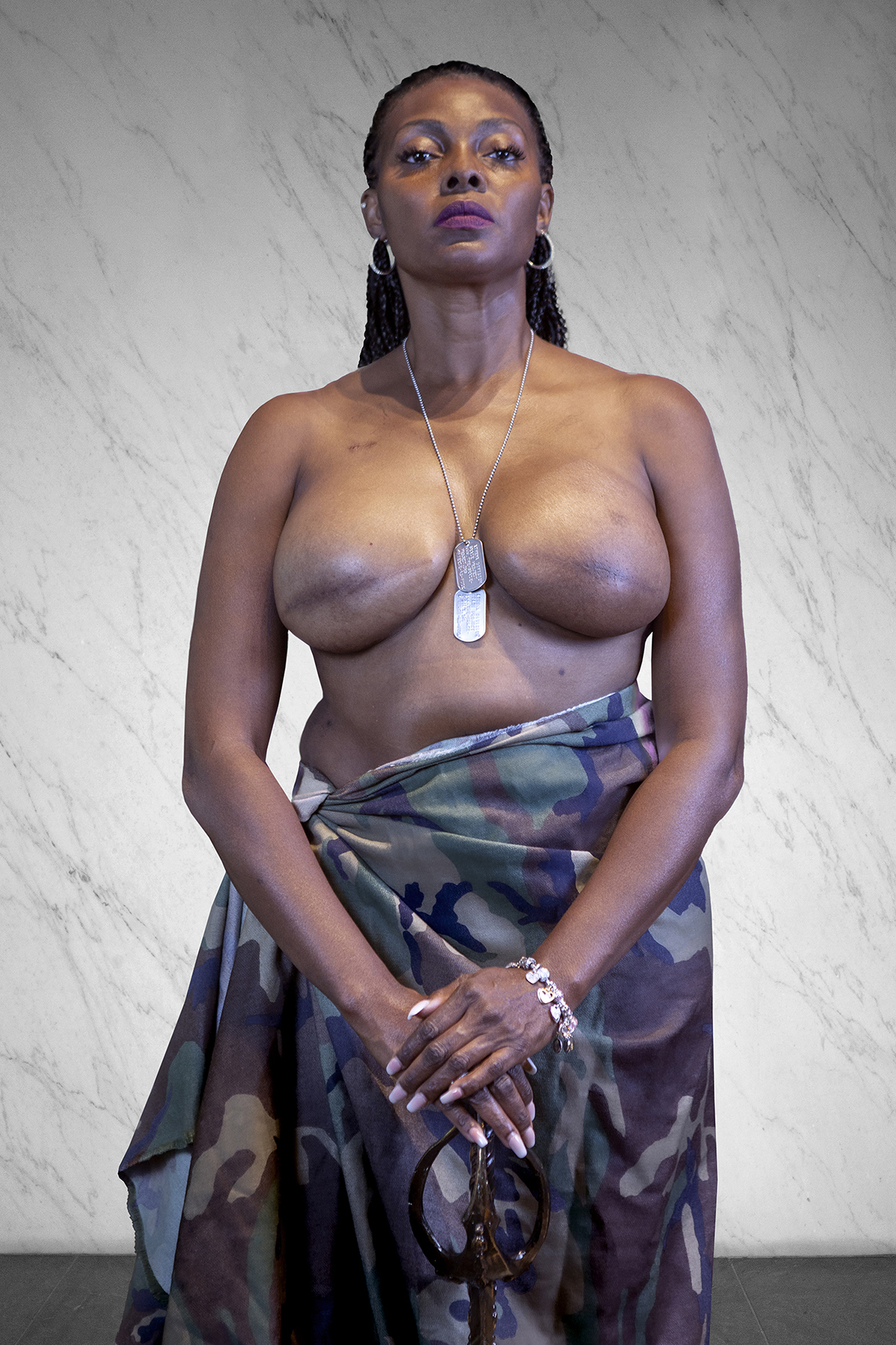
In what ways, if any, has your approach to the project evolved and expanded since then? What has surprised you most along the way?
“When I first started the project, my plan was to photograph 80 to 100 subjects… enough for a rotating exhibition and a book. But as I neared the 80, I realized that I wasn’t finished. That this subject had not been explored enough by me, let alone anyone else. Every person who stepped in front of my camera brought a different thing to my lens, both emotionally and physically.
“I decided that I would continue creating breast cancer portraits; however, I had to put a context to it. I started playing around with the numbers, dividing the number of new diagnoses in one year by the number of days. I came up with the fact that there are around 780 new diagnoses in the United States every day.
“The number changes from year to year, so I rounded up the number to 800 and decided that my goal would be 800 portraits and that one day I would exhibit all 800 portraits together in one space so that a person walking into a gallery could experience one day of breast cancer diagnosis in America. Recently, I just hit the 700 mark! I have now photographed 719 portraits.
“In addition to that, having lost many friends along the way, I have become a resolute breast cancer activist. We are all aware of breast cancer, but there are things that I have learned about that most people are not aware with regards to breast cancer. So I use my project to illuminate some of these disparities.
“For instance, I’ve worked very hard to make sure my project is diverse, and as such I try to bring awareness to the fact that Black women have a 40% increased mortality rate than their counterparts.
“I also try use my work to advocate for metastatic breast cancer. 30% of all breast cancer diagnoses will advance to metastatic. Stage IV breast cancer (metastatic) is a terminal diagnosis. Some try to claim it as chronic, but basically a stage IV diagnosis leaves a person with an average three to five-year death sentence. Despite this, very little of the millions/billions of dollars raised for the sake of breast cancer goes towards stage IV.
“I also started a chapter of the project called The Athena Division. In 2015, a friend who was a veteran pointed out that the Department of Defense did a study in 2009 showing up to a 40% increased chance of breast cancer for women who served. I began photographing Veterans and active military affected by breast cancer so that those women can be aware of their increased risk and medically advocate for themselves. Rather than draping the military women in flowy fabrics, I drape them in camo fabric and hand them a Hellenistic weapon such as a sword.
“Also I have become involved in ‘flat activism.’ Many women are denied aesthetic flat closure on a breast cancer diagnosis (no reconstruction and clean scars) and are pressured into having reconstruction. Young women are told by medical practitioners such things as that they will look deformed for the rest of their lives if they go flat, or that nobody will want to date them as a flat woman. It is my belief that all options for surgery along with the risks involved should be put on the table for a woman to choose when she is diagnosed with breast cancer, and she should absolutely be fully supported in that choice. She should not have to fight for it or be denied it.
“I have also photographed a few men. Although a much less frequent diagnosis, it is important that men realize that breast cancer is a possibility for them. Men often ignore a lump in their chest, and so often they are diagnosed at a much later date, leading to a much more advanced diagnosis.
“One of the things that has surprised me about this project is the sense of community that arose out of the project. Women who have been photographed are deemed as Grace Goddesses. There is a sense of pride in that title and they make friendships with others throughout the country who have participated in the project.”
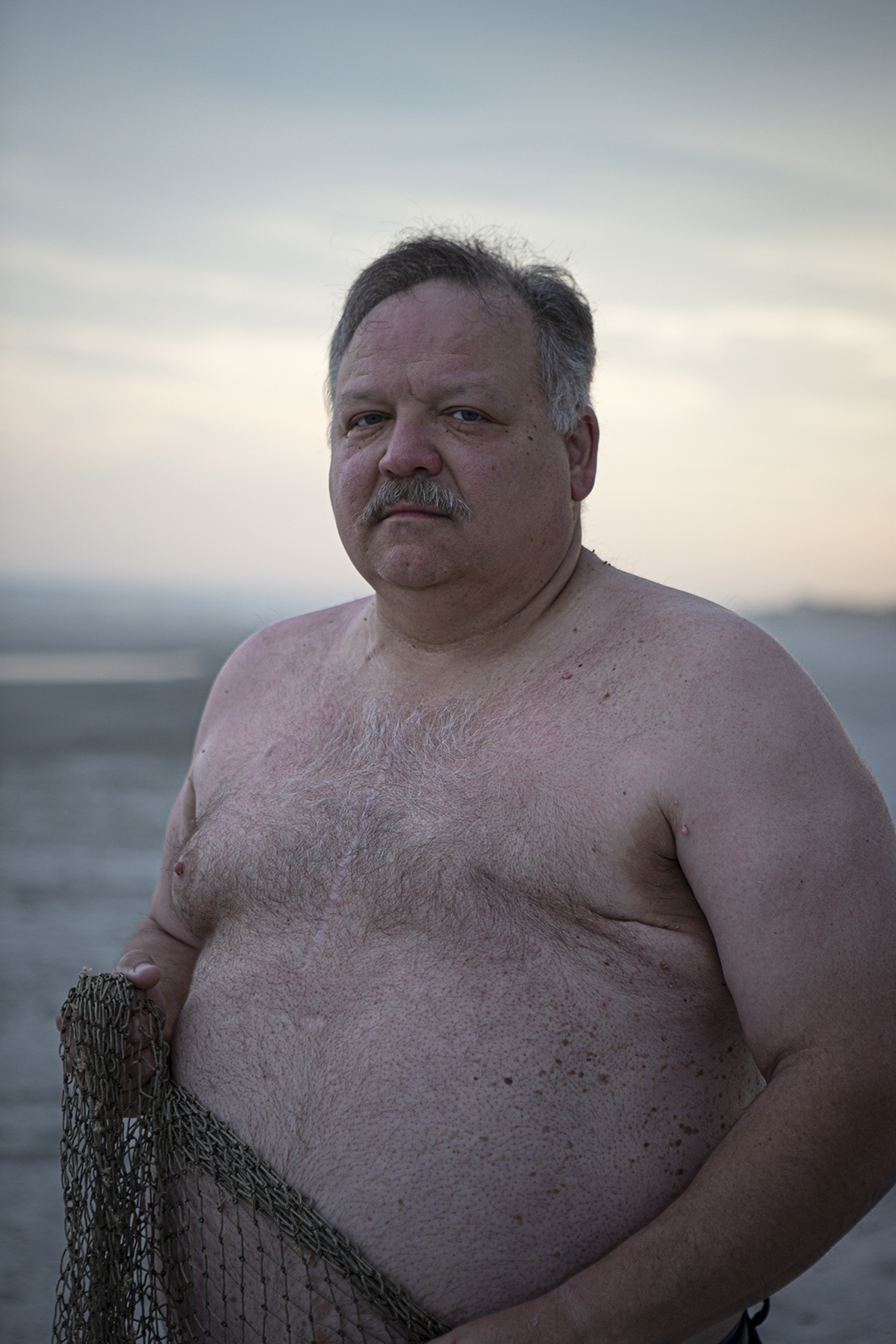
Why do you think so many people have reached out to model for the project? Have you spoken with many of them about their motivations?
“When I first started the project, it was very hard to get people; there weren’t a whole lot of mastectomy pictures out there, but word of mouth encouraged people to reach out. Once they started seeing more of my images and resonating with them, many wanted to have a portrait like that of themselves. I currently have two massive folders full of applications from people throughout the country that want to participate. I keep these on file so that I can be in touch when I am visiting their region.
“There are multiple reasons why people want to participate, and they often tell me why. Some of them simply want to help others by sharing their scars; however, most of them are struggling with self-acceptance and have a feeling that participating in a photo shoot like this will help them achieve that acceptance or at the very least take a step towards it. I believe it is about being seen, acknowledgment of the story that they have had to live.
“Breast cancer is very hidden. Standing naked in front of a camera, revealing the courage, vulnerability and the inner and outer scars that they live with, they are asking the world to accept the story that has been written on their body. I think the true ask, however, is directed towards themselves, a deep inner ask. This is where the true healing is.”
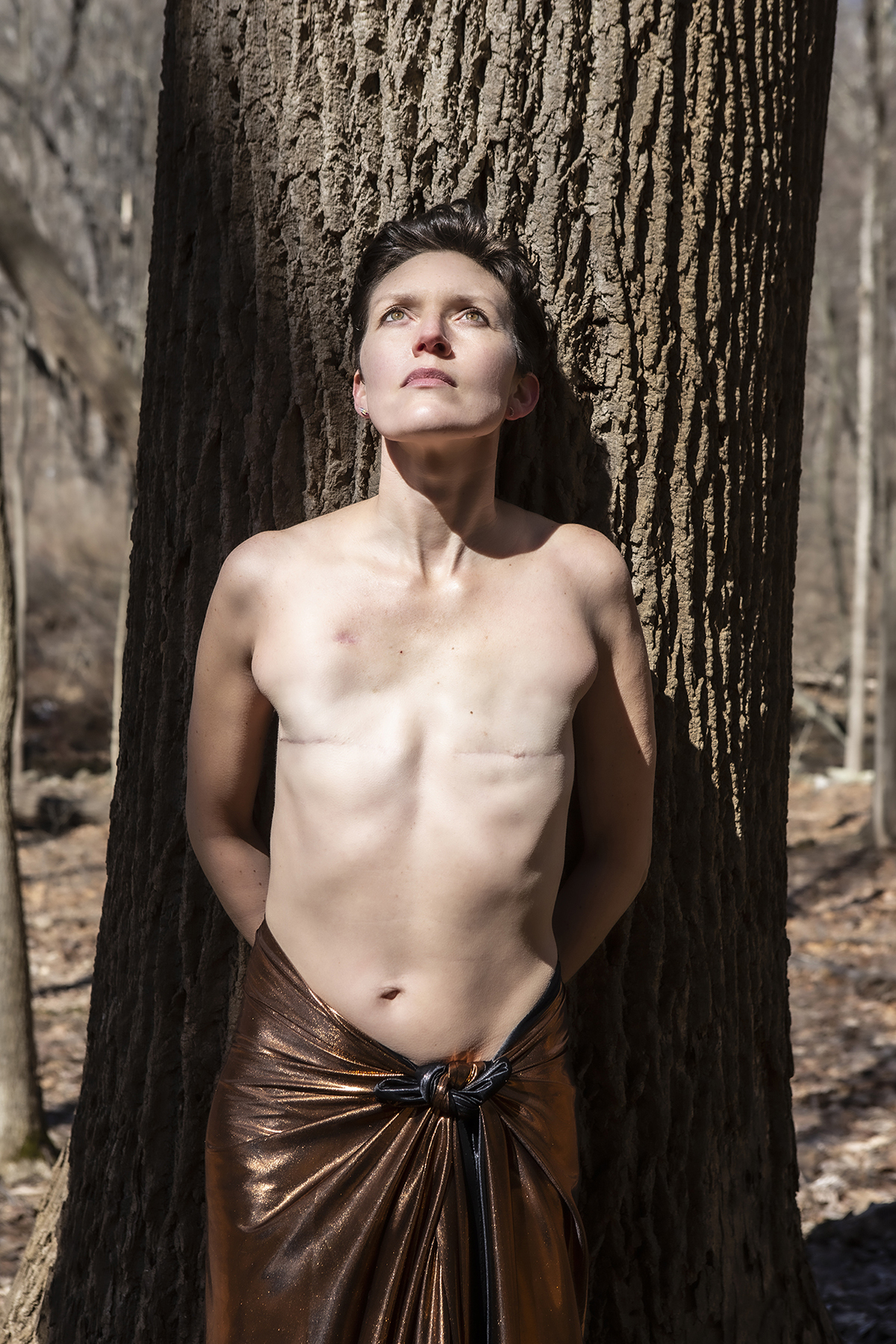
Are most of the models strangers to you when they first reach out? Why do you think they trust you to help tell their stories?
“Yes, most of the models are strangers when they reach out. I think they trust me to tell their stories because they see the presence, vulnerability, beauty, and braveness of others who have participated in my project, and then they read the comments online that people are writing in response to a photograph. Sometimes when I am at a group event and people are watching a photoshoot, they witness the transformation and shift that happens in the person they are witnessing being photographed. If they were hesitant, they often change their mind after seeing another person’s shoot.”
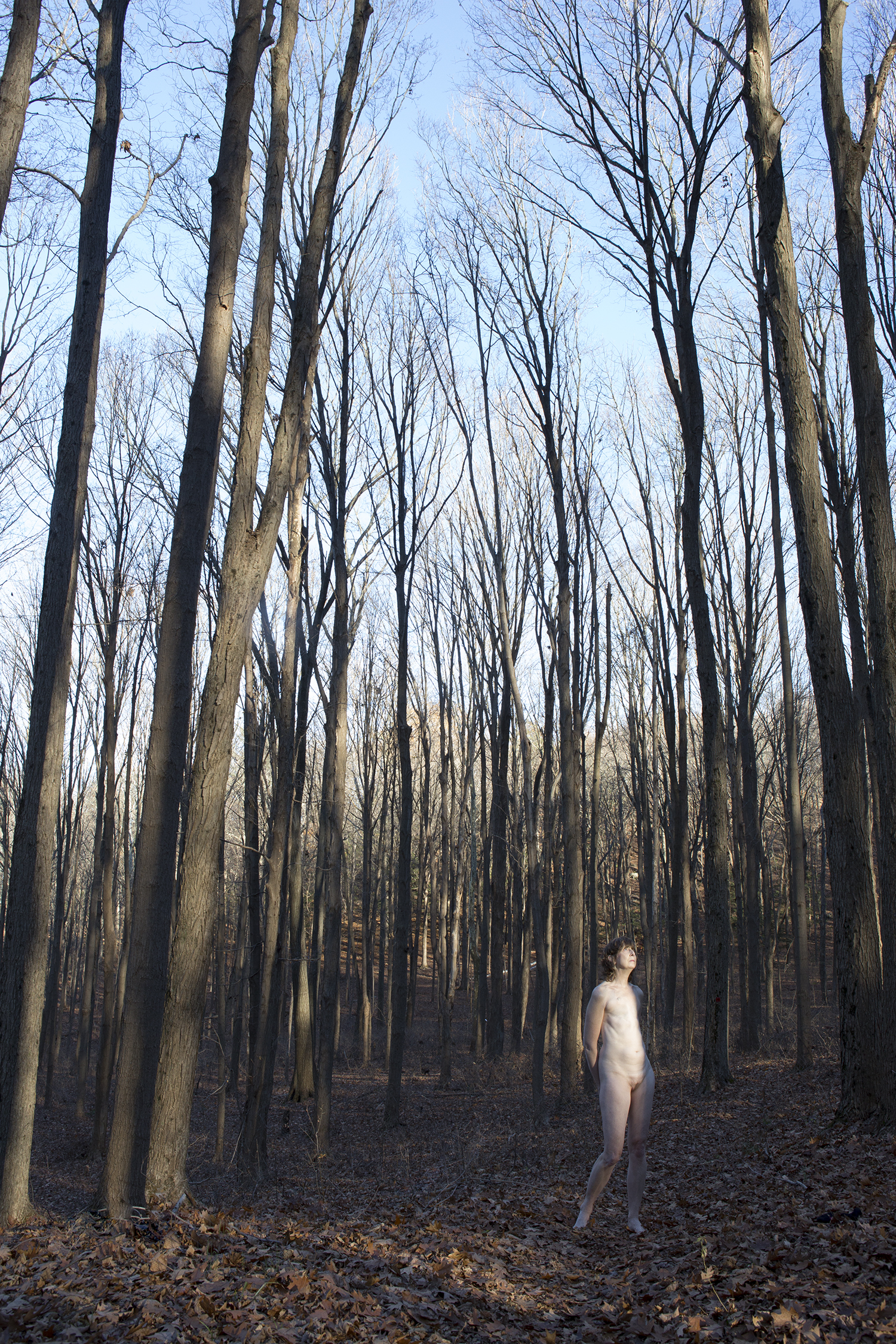
Might you be able to share a story or two from one of these models? What inspired you most about her, him, or them?
“There are so many stories… It is hard to just pick two. Spirit comes to mind, and so does my friend Carol. Carol was one of the earlier Grace Project subjects. She was one of the first metastatic women that I became close with.
“She was such a cheerleader of The Grace Project; having stumbled on the project at her diagnosis, she made her decision to go flat based on portraits she had seen. I met her at a retreat for women with metastatic breast cancer. She gave me her number and told me that she lived locally and would love to be photographed.
“It was the end of November and a very cold New York November at that. She told me that she wanted to be photographed outside, that she was hoping for a warm day. Miraculously, the day of her shoot was 70 degrees. I asked her if she was up for a hike; she said she was, and I took her on a trail near my house that leads to the Hudson River. We got to the river, and I made her work incredibly hard to get the results that I wanted.
“When we left the trail, we went back a different way. Heading down into a valley Carol stopped and said, ‘Do you see that?’
And I said, ‘Yes, Yes I do.’
‘What is it?’ she asked.
‘I don’t know,’ I said. ‘But I think we would be remiss not to take a portrait right now… are you up for it?’
“We were looking at some kind of a mist, a veil… to this day, I’ve never been able to explain what we were looking at, but it was magical. Right then, Carol stripped off all of her clothes and ran into the woods, and I shot her portrait.
“The mist that we were seeing was not visible in the image, but the image was very powerful. The leaves were all off the trees, blanketing the ground. The trees stood bare and tall, and it was the epitome of autumn heading into winter. Here was this woman at the end of her life with no breasts, as if she had lost her leaves. She was as tall and grand as any of the trees there in those woods. Her face was half in shadow and half in light.
“If a photograph was to represent a woman at the end of her life, this portrait of Carol would be it. I remained friends with Carol to the end of her life. She told me that she knew she didn’t have much time left, but that she knew she was exactly where she was meant to be. She said that she was meeting people and doing things that she never would have done if it weren’t for cancer. (She included participating in The Grace Project as part of that.)
“She wrote a book at the end of her life titled Enough, which she sold to raise funds for an around-the-clock nurse once she went into hospice care in her home. Carol would have visiting times posted on the door of her home, and on the days I would go around to visit, there would be various women surrounding her, drinking tea, chatting and laughing with her. When Carol died, I went to her memorial. I knew that she had planned every aspect of it: who would talk, who would sing, even what we would eat.
“It was incredibly inspiring to watch a woman approach death with as much gusto as she lived her life. Carol made me feel less afraid of death. I never watched Carol die. I watched her fully live right up until the end.”
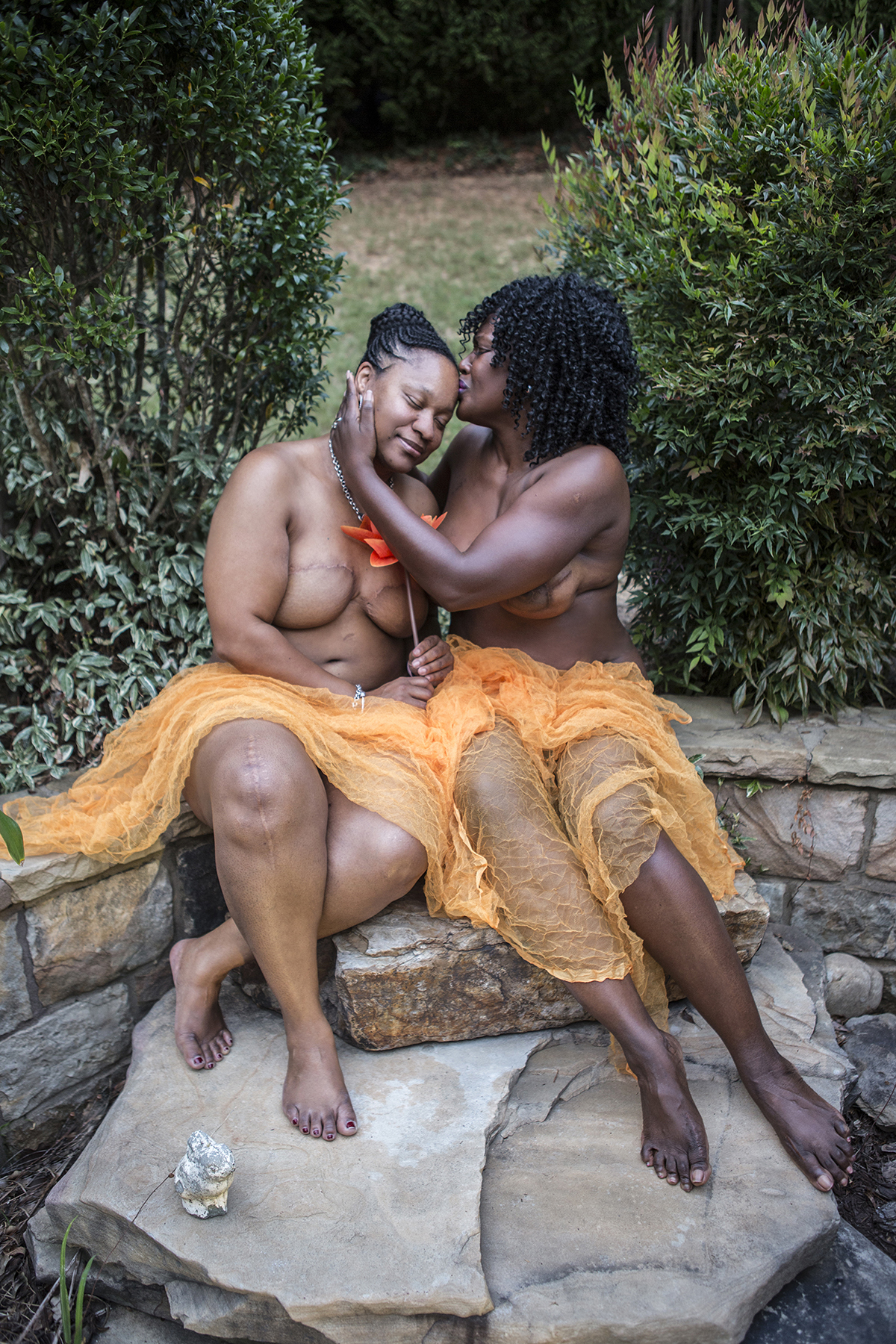
Can you walk me through these collaborations with your sitters? How do you choose the location? The wardrobe elements?
“I tell my subjects to wear their hair and make-up the way they like to wear it normally. I want them to look like themselves in their portraits. I allow jewelry, and often people will wear jewelry that is meaningful to them). I drape them in fabrics; I usually have a suitcase full and they get to choose a drape/color that they resonate with. Sometimes, I pick it out for them because it will work with the scenery or the color of their eyes or hair.
“Since I travel around the country the location is also very random where I shoot. I prefer epic locations; however, I try to make it as easy as possible for women to participate, so the locations vary. As a result, I have shot everywhere from nasty old hotel rooms in front of a seamless backdrop to places like Red Rocks stadium. I prefer to be outside, but some things like the weather or a person’s mobility can limit the possibilities.
“Sometimes when I have a shoot lined up, a person will take me to their sacred spot. It is usually a place of beauty that they visited while going through their treatment. For instance, I found out that there was a teahouse on top of a mountain in Alabama. I didn’t know that there were mountains in Alabama, let alone a teahouse!
“I also get invited to retreats and usually, these are in epic settings so I get to photograph multiple subjects in these locations. Most recently, I went to a ‘flattie’ (women who opt for no reconstruction) meet up, on Flat Top mountain, in Mesa, Colorado. As you can imagine, the backdrops were quite epic.”
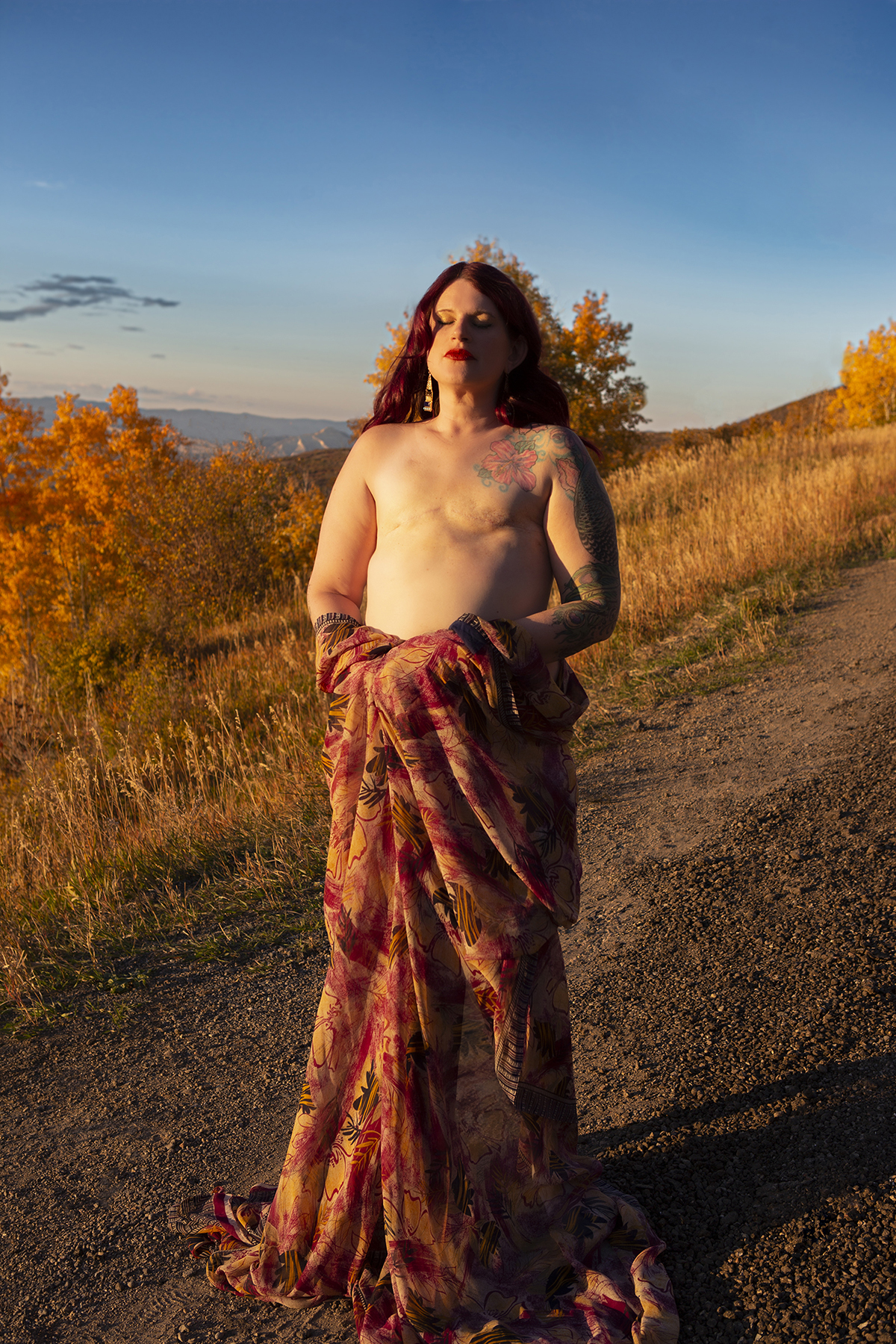
What do the sessions themselves look like? Does it depend on the model?
“The photo session usually takes about half an hour. In the beginning of the project, I would take up to about three hours with a subject because I was learning how to achieve the results that I wanted. But at this point, I know how to work with them to quickly get them to achieve what it is that I am looking for.
“The sessions vary a lot. It absolutely depends on the model and the situation. Sometimes it is just me and the model, especially if it is someone that travels to me to be photographed. Sometimes, they bring their partner, or a sibling, or even a child. If this is the case, I often add in a portrait of them and their person, just for them to have as a memory.
“Sometimes, if it is at a retreat or gathering, the women will observe each other’s shoots, and hug and encourage each other when they are done. Often, in these situations, a woman that didn’t think she would participate see’s the transformation happen in the participant who is being photographed and changes her mind about being photographed. The transformation is very clear, and to witness it happening is quite powerful.
“Sometimes the places I shoot in are very public, in which case it is very good to have my assistant there to divert the public away from the shoot, or at the very least to explain what we are doing. They always respond kindly to the situation, and they sometimes share their own connection with breast cancer.
“The sessions feel very sacred. I start the photo session off by guiding my subject through a meditation. I have found that this gets them out of their head; nervousness and self-consciousness of their surroundings tend to disappear. My photoshoots are a very intimate experience, even if it is in a public place as busy as Central Park.
“Sometimes a person will cry during their session; sometimes they are filled with joy. I encourage them to feel whatever it is that they are feeling in the moment. I want their emotion to be authentic, so when I see tears emerging or their face tightening up, I ask them to give themselves permission to let it flow. If it is joy they are feeling, I encourage them to absolutely embrace that feeling. Often after a photo session, the person will fall into my arms sobbing. It is an enormous release for them and very liberating.”
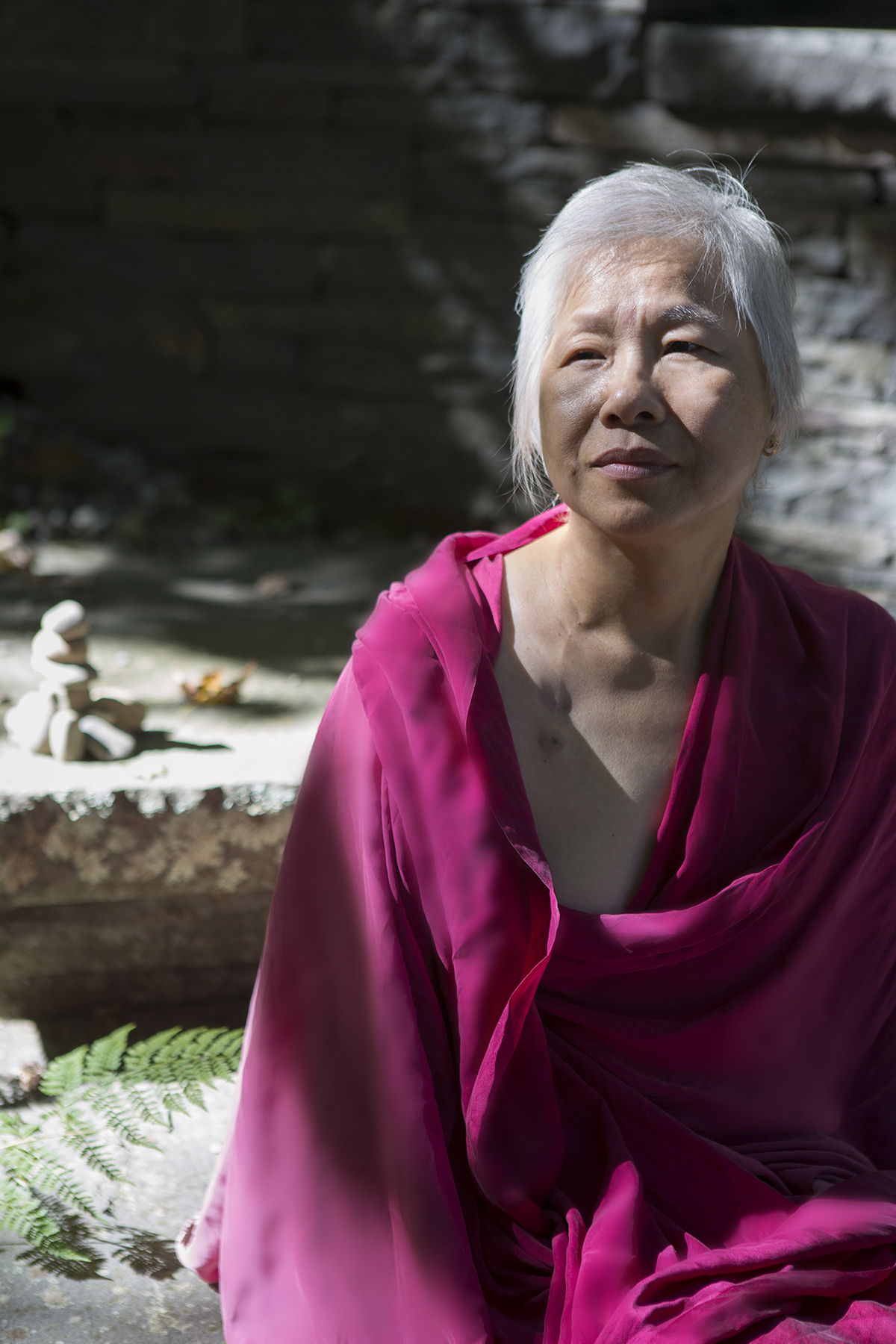
What is your most powerful memory from your time working on this project? Any one moment you’ll always hold onto?
“I went to a metastatic retreat at The Omega Institute. It is a beautiful place in Rhinebeck, NY, that is all set up for healing retreats. There were six women in the group to whom I had presented my project who wanted to be photographed that day. Five of them wanted to be photographed before lunch on the field, but one woman named Louise, who was very sick and frail, wanted to be photographed after lunch at a beautiful spot on the property called The Sanctuary.
“Lunch arrived, and one of the tables beckoned for me to come and sit with them. There was a young woman named Carla; I sat next to her, and I could tell she wanted to talk. Earlier that day when I had presented my work to them, I had explained how it had all arisen from a boudoir portrait session.
Carla said to me, ‘I did a boudoir portrait once.’
‘Oh?’ I replied.
“And Carla began to tell me about how she and her husband had a wonderful marriage, and that they had their challenges but they were deeply in love and happy and she wanted to give him a beautiful gift on their anniversary. So she booked a boudoir session, and before she even got her photographs back, she also got her breast cancer diagnosis.
“At this point in the conversation, she started crying telling me that she never looked at those boudoir photographs because they represented to her this black cloud that had suddenly entered her life. At that point, she started full-body sobbing. I held her and just let her cry.
“When the tears subsided, I suggested that she come to my studio and we would do a Grace Project portrait, that perhaps she might be willing to create a portrait that would represent the new way she was stepping into her life after the healing work she had done at the retreat. Lunch ended and Louise rounded me up. Carla asked if she could come and watch.
“It turned out that it was beneficial to have Carla come and watch because Louise was very frail and could barely walk, so having a person to help undress her and set her up on a rock draped in the red silk that she had chosen to be wrapped in proved to be a fairly difficult task.
“But upon setting Louise in this beautiful setting with this gorgeous silk wrap, she transformed from a very frail sick woman to a powerful Goddess. It was breathtaking. Carla saw the transformation, and at the end of the shoot, she shyly asked if taking her top off and posing in her jeans would be enough for the purpose of my project.
“I told her, ‘of course’ So I wrapped the red silk Louise had been wearing around her jeans and sat her amongst the beautiful rocks and trees, and I began the process of photographing her.
“The photographs take me a little time to get to the subjects, and I received a message on Facebook chat from Carla one night. She asked me when she could expect to see her portrait. I explained it was a long process but that it would be fairly soon. I asked her how she was doing, and she told me that she was having good days and bad days but that they were putting her on a medical trial the following week in the hope that it would stabilize her.
“A voice in my head told me to send Carla her photographs immediately. That she needed to see them. I told her to hold tight, that I was sending something to her via email to her. When she opened up her photographs, her reply was ecstatic. She was so grateful and declared what a gift these photographs were to her and all other cancer survivors.
“I was so glad that I has sent her portraits, through. Based on her response, I knew that these photographs had given her some strength that she would need in the coming weeks.
“A couple of weeks later, I glanced at my Facebook page to see Carla tagged in a post. The post announced that Carla, sadly, was no longer here on this earth with us. That she had died. I was in shock. I fell apart sobbing for a good half hour or so. Carla was the first person in my project that I had lost to cancer. I was devastated, but at the same time so relieved that I had listened to that tiny voice telling me to send her pictures right away.
“My friend Carol, whom I mentioned earlier, knew Carla and was going to attend her wake. Carol asked if she could take the printed version of Carla’s photographs to her husband. I agreed, but I didn’t know if Carla had even told her husband that she had done this shoot. So I wrote him a letter, explaining exactly how it had all gone down.
“A couple of weeks later, I got a card in the mail from him thanking me for the photograph. He told me that Carla had told him all about the photoshoot and that for the first time since her diagnosis, between the retreat that she had attended and the photoshoot that she did with me, she was finally able to make peace with her body and all that cancer had done to it.”
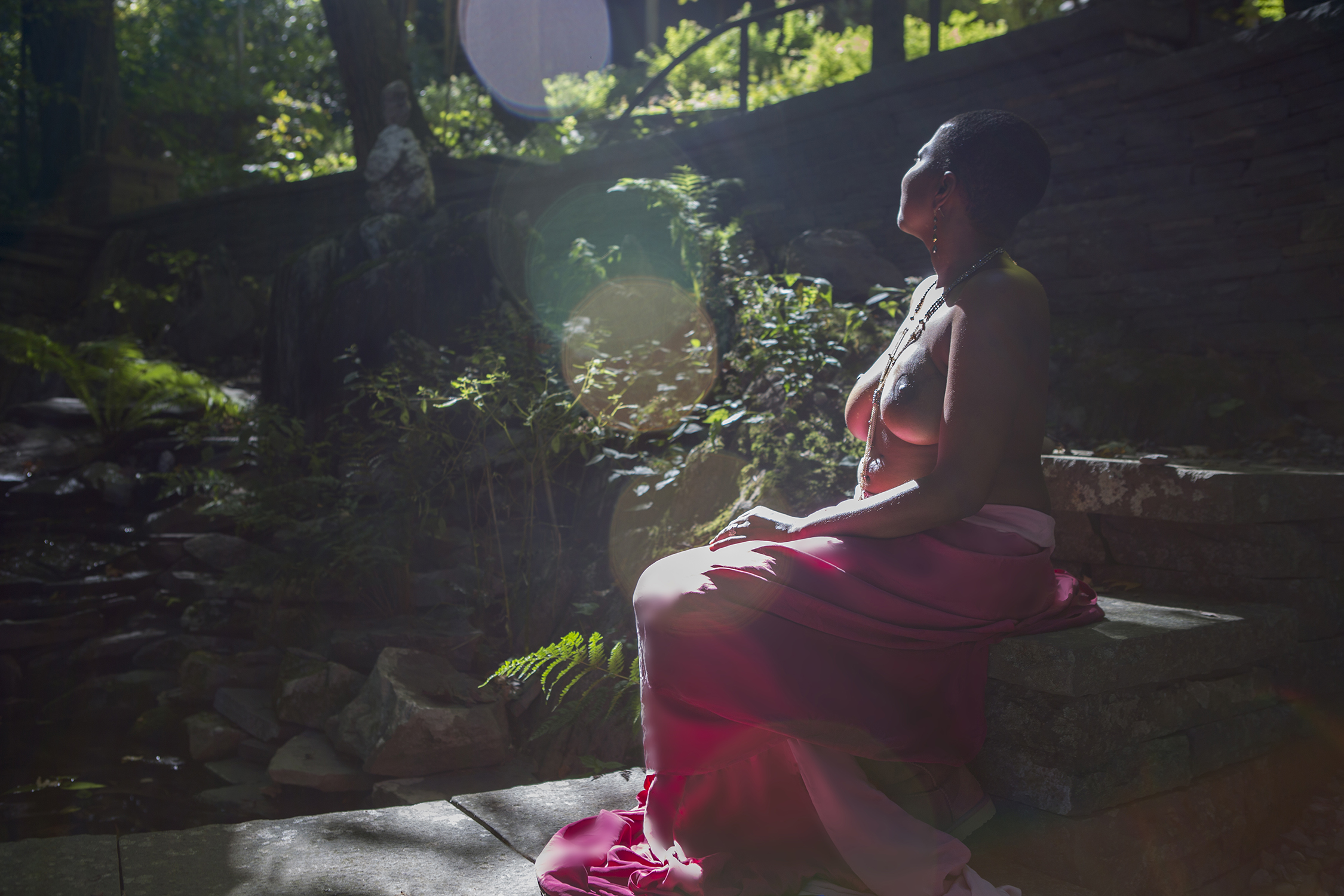
Have there been many reactions you’ll never forget?
“I have received so many amazing responses from women, including Carla’s. It is hard to choose one specific one, although here is a letter that I received from one subject that moved me deeply:
‘Having done the shoot by now, you know how much those photos mean to me, and although my daughter is not wanting to look at them now, I know she will when she is older. I often look at my pics, examining every angle, and although my mutilated, scarred body is glaring for all to see, my face carries the peace and tranquility that I thought was gone forever. Thank you for all your work.
‘I am honored to have been photographed by you and I am amazed that I am not scared, ashamed, or embarrassed for anyone to see me. There is beauty in all these photos that cannot be put into words. They transcend our physical selves, they go beyond words. They convey emotions.
“My body might be failing, but when I look at my photos, I still see that strength. I wasn’t sure if I had it anymore. You showed me I did. This is a gift for me and for my daughter and for every fighter out there. The scars do not make me who I am. The cancer destroyed so much of me, but it hasn’t destroyed me. There’s fight left, and when I feel like I can not go on, I just look at the pictures and realize that I can.’”
Are you still in touch with most of the models and their families?
“I stay in touch with all of the models; I share a deep connection with all of them. Mainly we stay in touch via social media, and also I continuously bump into many of them at various breast cancer events I attend. Being photographed like this is an intimate experience, and so even though I only spend a short time with some of them, the time that we share is well remembered by us both.
“Sadly, some of my subjects have died. During lockdown, I took the time to send out signed fine art prints of everyone’s portraits that I had photographed up to that date. I had to hunt down the family and friends of those who had died to see if they wanted the portrait of their loved one. Here are the words I received from one of the Moms I reached out to. As you can imagine, her words made me cry when I received them.
‘Hello Charise,
I received Megan’s portraits. You’re an amazing photographer. You were able to capture my sweet girl’s strength, beauty, tenacity and even her fear. She was so strong and fought till her last breath. Dying was not part of her plan. I will treasure these as long as I live. I have many many photos of Megan before and during her fight. But none like these.
I hope you continue your work capturing women during their journeys of hardship.
May God bless you and keep you,
Megan’s Mom forever’”
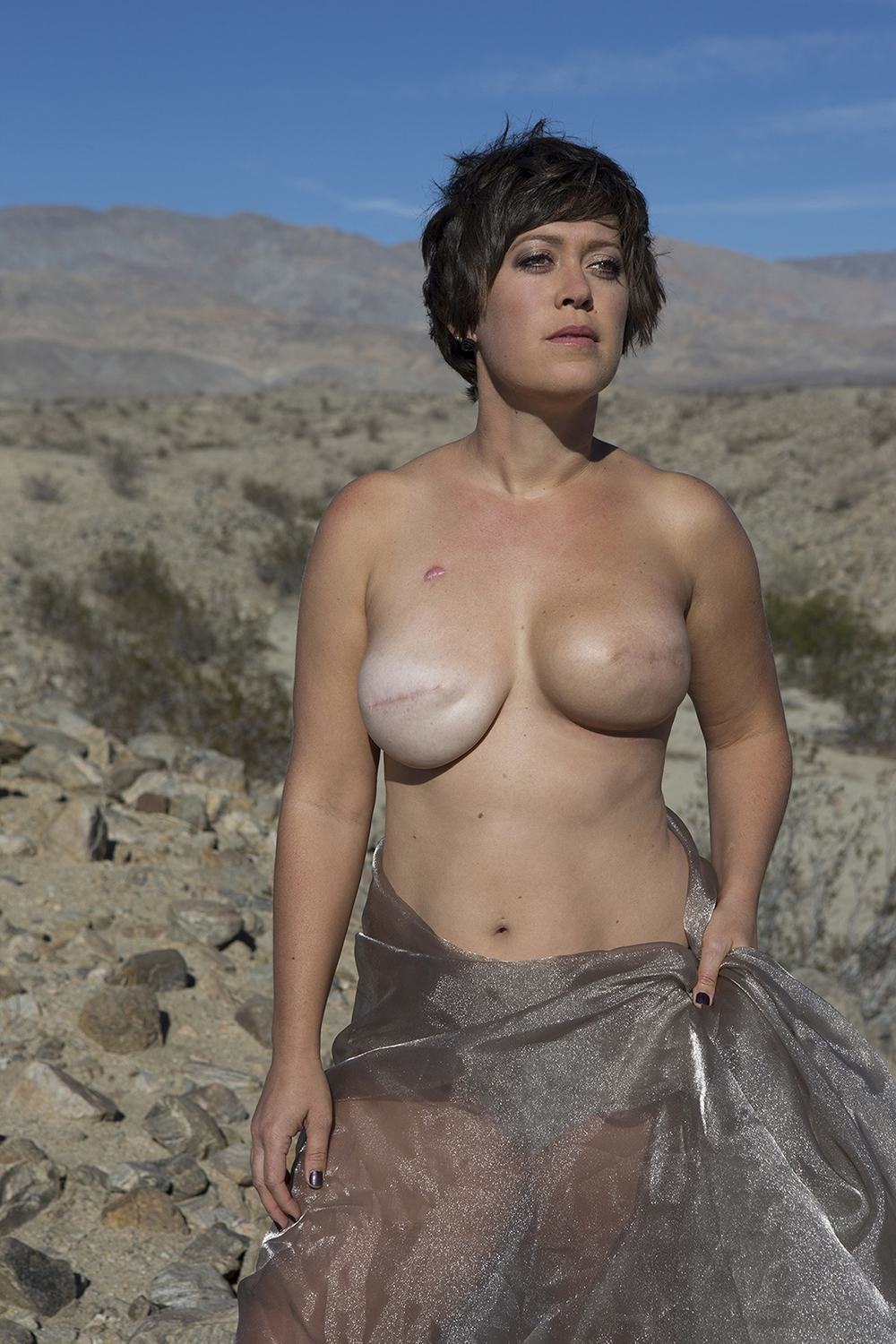
All images © Charise Isis. Charise Isis is a Top 50 finalist for Photolucida’s Critical Mass.


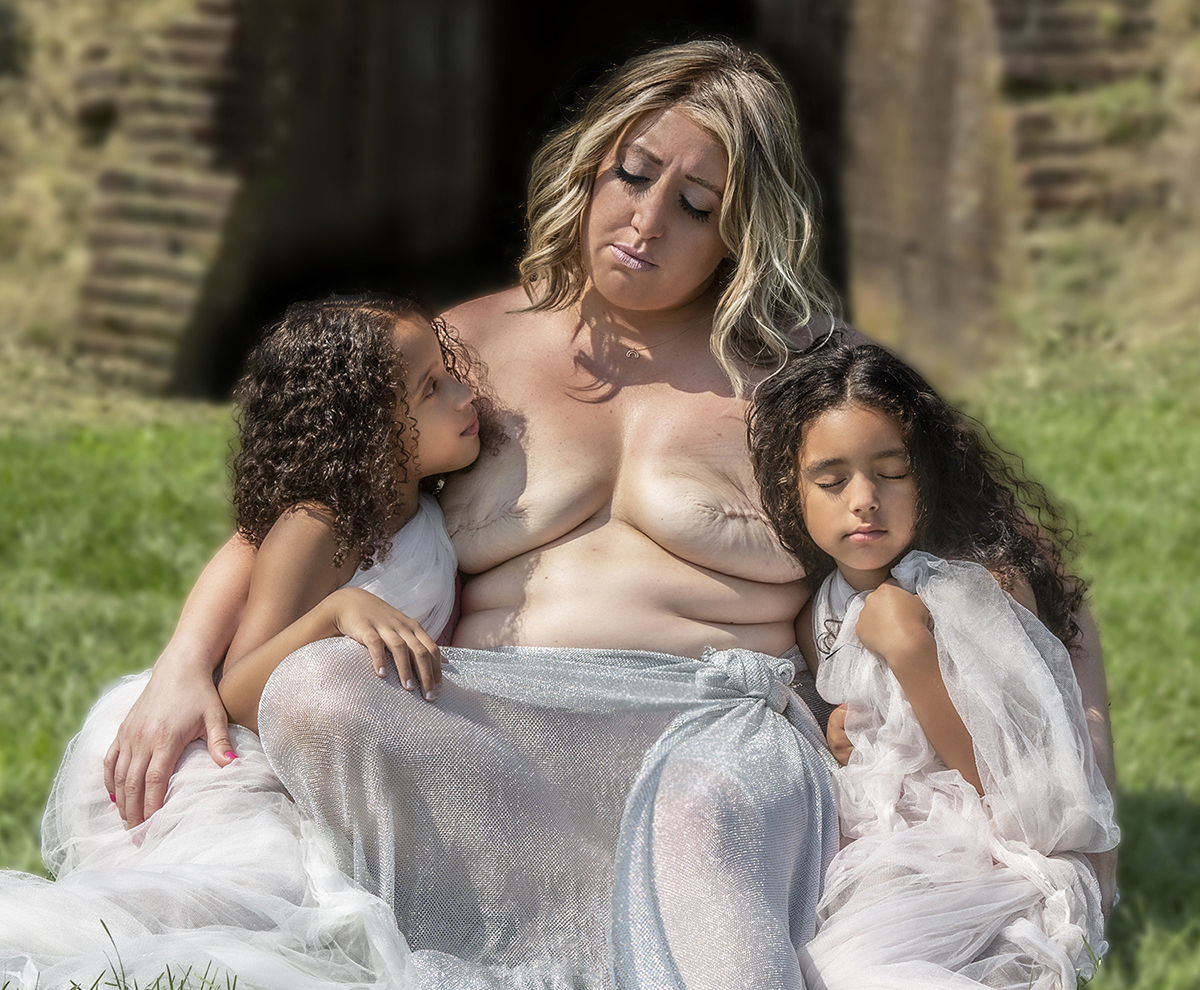
Leave a Reply